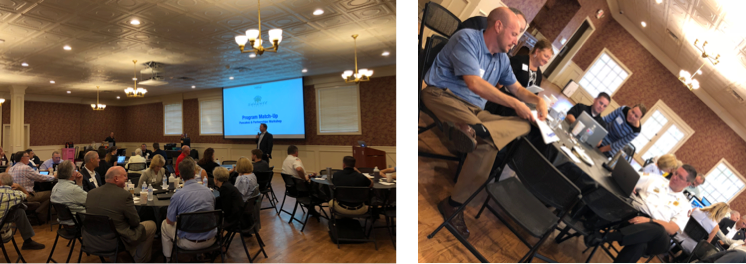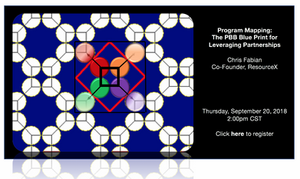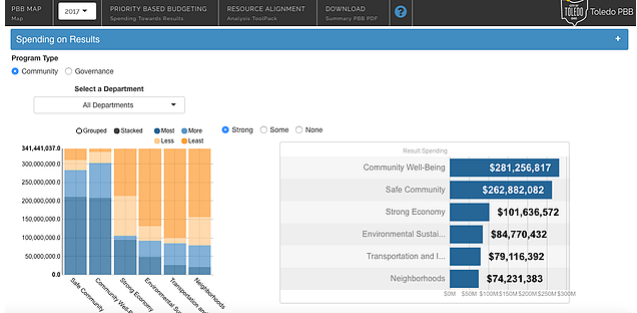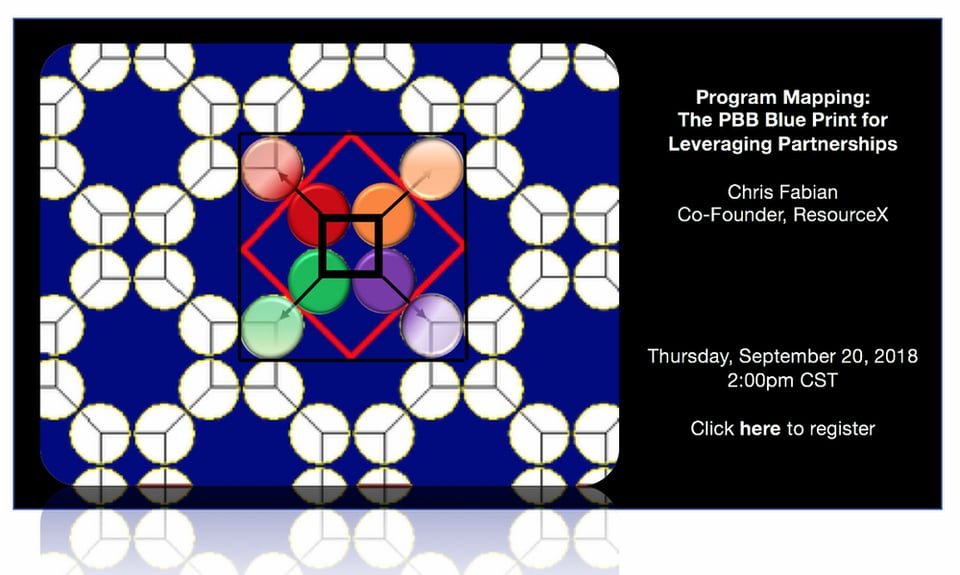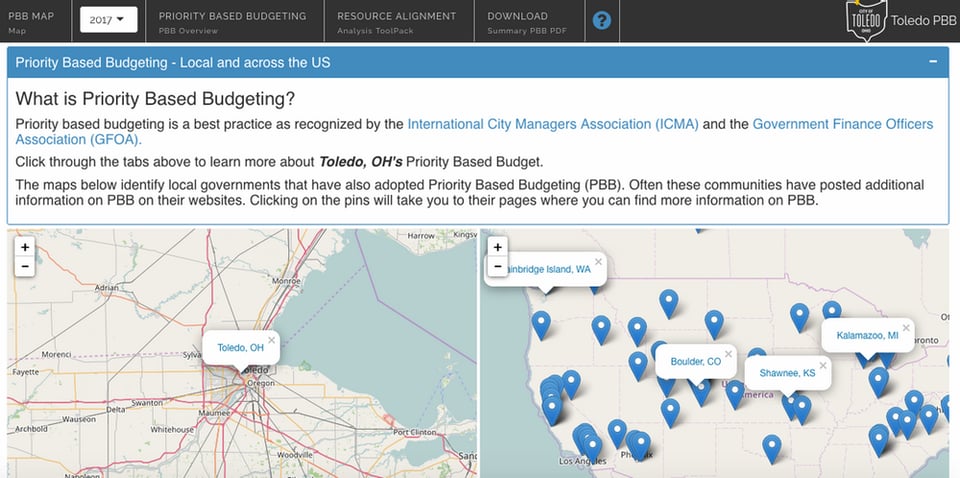"Transparency of information is extremely important at the City of Shawnee. By making PBB data available to the public, we want Shawnee residents to gain a broader knowledge of the services their city provides - and the resources it takes to provide those services to meet their expectations." - Caitlin Gard, Shawnee Strategic Initiatives Manager
The City of Shawnee, Kansas is leading a ground-breaking revolution in program mapping through open PBB data. This regional approach to understanding program commonality across a community (city, school district, hospitals, county, non-profit organizations and other private sector entities) is unleashing powerful and abundant partnership opportunities in an incredibly original way.
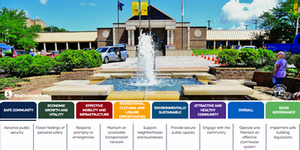
Better yet, the results of this collaborative community effort are completely transparent on Shawnee’s new open PBB data platform. From this platform, the entire community can easily understand exactly where program overlap exists between key community partners, and better understand partnership opportunities and efficiencies gained through program data metrics. The ideal way to truly champion community partnerships is through transparency, and nowhere else is this effort as transparent as in Shawnee, Kansas.
How It Works
When a local government like the City of Shawnee implements PBB they become a “catalyst” for the identification of partnerships in their community.
Shawnee is a PBB catalyst community - this means they have identified each and every service they provide ("snow removal," "animal control," "police patrol", "street sweeping" etc), the costs and workforce dedicated to each service, the measurable influence (or lack thereof) of each service on societal goals (safer cities, local economic vitality, environmental sustainability, etc), and other key attributes for every service (is the service provided by another entity, is it mandated, does it recover costs through grants or fees, etc).
Neighboring service providers from the public sector (neighboring cities, towns, county gov, school district, etc), non-profit, healthcare, and private sector (usually represented by a local Chamber of Commerce) are invited to a 1/2 day workshop to "match up" the services they offer, to the services identified by the "PBB catalyst community."
This approach is an accelerator and a short-cut, as the "non-PBB" service providers don't have to implement PBB. They benefit from the catalyst community having gone through the work. And by "matching up" services to the catalyst community, a universe of potential program partnerships opens up to provide a fast-track to optimizing resources in a very dramatic way across a region.
Participating organizations come to identify the services they share in common (“match up”) with the local government in their region. Service-sharing opportunities in common are then characterized in terms of partnership, merged/consolidated services, in-sourced regionally provided services, or out-sourced opportunities from the perspective of each participant. And finally, these opportunities are further characterized and prioritized in terms of the magnitude of complexity in implementing a shared-service approach, and the value of the opportunity once realized.
Shawnee’s Breakthrough
On August 15th, the City of Shawnee invited over 20 local service providers to participate in their Program Match-up. Participants ranged from two local school districts, the neighboring cities of Lake Quivira and Merriam, Johnson County, the City of Kansas City Parks, Shawnee Community Services, and private sector businesses including the Holiday Inn Express, and the Chamber of Commerce.
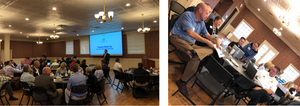
For a ½ day on the 15th, participants went online to Shawnee’s Open Data site and began to match up services.
Entrepreneurially, Program Mappers seek opportunities to in-source programs entirely to provide to other entities, as a more efficient model of service delivery where they’re positioned better to provide the service regionally. This would be a revenue generating opportunity to the in-sourcing entity, and ideally an efficiency (resourcing the service, for less) to both entities given the economy of scale that could be produced.
Here we can see (below) “High Tech Technologies” has focus on IT Department, Holiday Inn Express interested in parking lot maintenance, and McAnany Construction interested in Street Improvement.
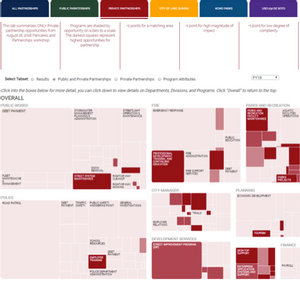
Opportunistically, Mappers seek opportunities that take the form of advantageous out-sourcing – where organizations can imagine getting services off of their plate, reducing the need for their own organization to provide a service if it could be provided by another local entity. And in turn, allowing their organization to “free up and reallocate” their own resources towards the high priority pursuits (new programs they need to launch, or current services that need enhancement) that they may not be able to fund today.
An example of this shown below where a neighboring city is identifying the possibility of collaborative fire or emergency response.
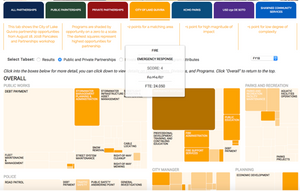
Finally, beyond partnerships or mergers, Mappers stand the chance to simply learn immensely from each other. Maybe one of your organizations is charging a fee for a service that the other organization is entirely subsidizing with general government resources. Perhaps one of your organizations provides a service that the other organization currently privatizes, or doesn’t provide at all.
From a benchmarking perspective, you can begin to compare the costs of providing services, FTE (workload) support, and BPA and Result scores
From a policy intelligence perspective, you can begin to learn from each other interesting policy insights surrounding cost recovery of specific programs, sourcing, and overall community priority.
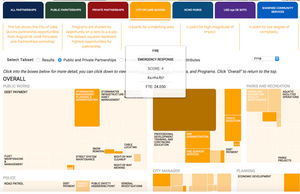
Future Applications of Program Mapping
In the State of Colorado, a "Statewide Program Mapping Initiative" is rolling out in the fall. The goal of this Initiative would be to facilitate the identification of every program offered by every local government across the State, the cost of providing every program, and the opportunity to optimize and prioritize resources across all communities.
Since there is already a "critical mass/density" in Colorado, in terms of having 26 PBB implementers (“catalyst communities”), Program Mapping initiatives will be launched through each of the regions, and bring every non-PBB local government quickly up to speed in terms of matching up their services.
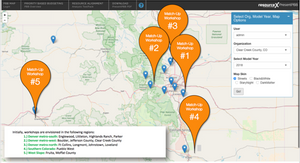
Program Mapping Webinar
Organizations participating in a Program Mapping initiative come to identify the services they share in common (“match up”) with local governments, non-profits and private sector entities in their region. Service-sharing opportunities in common are then to be characterized in terms of partnership, merged/consolidated services, in-sourced regionally provided services, or out-sourced opportunities from the perspective of each participant. And finally, these opportunities are further characterized and prioritized in terms of the magnitude of complexity in implementing a shared-service approach, and the value of the opportunity if it were to be realized.
To learn more about this initiative, join ResourceX on September 20th at 2 pm CST for a free Program Mapping webinar. Register here for Program Mapping: The PBB Blue Print for Leveraging Partnerships!
Related Articles
Moffat County, CO - Resource optimization through county-wide partnerships
Clear Creek County, CO - Leveraging regional service providers
City of Shawnee, KS - Launching PBB Program Mapping
Leveraging Partnerships to Fund the Future - Article and video overview

